Summer Car Maintenance Tips for Your Road Trip
– By #Pioneer Auto Show
Summer is just around the corner, and that means that summer road trips are being planned, plotted and schemed. There's something special, almost magical about the Great American Road trip. Road trips hold such a special place in our hearts because they represent a modern-day adventure into the unknown. With the open road in front of us, our worries behind us, our friends and family next to us, and the promise of something unique and fun binding those things together, the road trip is truly something that we can all appreciate. Before your tires peel away at the open road, follow these summer car maintenance tips to make sure your car has had all the proper maintenance to have a fun, safe, and memorable time.Check Your Tires
It's easy for someone to overlook their vehicle's tires especially after they've been covered in snow all winter. However, following this summer car maintenance tip will help you keep your tires in perfect condition. Improperly inflated tires can be particularly dangerous during hot summer months. As the temperature changes, so does the amount of air pressure in your tires. Check your owner's manual or the sidewall of your tire to know what PSI (pounds per square inch) your tires should be. An underinflated tire will put pressure on the sidewalls and, with enough heat, the tire will blow. On the other hand, an overinflated tire won't make the necessary contact needed with the road and can cause you to hydroplane in wet conditions. Don't forget to check the pressure in your spare tire as well because there's no point in having a spare if it's not properly inflated. Properly inflated tires will keep your gas mileage in check and keep your road trip going.
Change Oil and Filter
Oil is what keeps your car from seizing up and turning into a big hunk of useless metal. It keeps all those fast moving parts lubricated to reduce friction, which causes heat. Summer temperatures and an increased amount of driving means that a car is more likely to overheat. To check your oil, let your car run for a few minutes, park it on a level surface, and then shut the engine off. Open your hood and locate the oil dipstick. You want to look at the amount of oil on the dipstick and the color of the oil. If you need to add oil, you can easily add another quart. The color of the oil should look brownish yellow and clean on the stick. If the oil is dark, then there's a lot of dirt and grim in it and you'll need a change and an oil replacement.
Change Your Wipers
As the old saying goes, "If you don't like the weather in South Dakota, wait five minutes." Summer thunderstorms can bring high gusts of wind that pelt your vehicle with rain and hail. They can also put your road trip to a halt in a hurry. You can't drive if you can't see, especially if you're driving at night during a storm. Depending on where you live, winter can be pretty rough on your windshield wipers. From snow and salt to ice and extreme temperatures, winter weather can cause the rubber on your windshield wipers to crack and become brittle. Once you start seeing visible streaks from your wipers, it's time to change them. Go to your local auto parts store and have them help you locate the correct wiper for the year, make and model of your vehicle.
Check Your Brakes
Make sure you and your friends or family are not riding around on bad brakes. You're brakes are the single most important piece of safety equipment on your vehicle. Your brake pads need to be changed when the lining on the pads are worn down past the minimum thickness required by the owner's manual or by state law. If you hear scraping and grinding sounds when you break, see a dashboard indicator, feel your brake pedal getting mushy when you go to brake, or if pressing the brake pedal is hard and rigid, you should get your brakes checked. Following this summer car maintenance tip early on could save your from a more costly repair later.
Check Your Radiator and Coolant Levels
Your road trip will come to a quick end if your car overheats. Similar to checking the oil, a car's radiator and coolant levels are extremely import in keeping it running efficiently. If parts in the engine get too hot, they can actually melt together causing huge problems and a huge repair bill. Leaks, cracks in hoses, loose or broken belts, even a radiator cap that's not properly secured can cause your car to leak antifreeze, heat up and break down. Generally, the rule is to flush your radiator and add new coolant every two years. Flushing the radiator is done with a special chemical that cleans debris and build-up on the inside of the radiator. For summer driving, coolant should be added as a 50/50 mixture of antifreeze and water. You can even buy premixed coolant so you don't have to bother with the measurements. Following this summer car maintenance tip will keep your wheels rolling until the leaves start falling.
Now that you've done some basic maintenance on your car, you're ready for your summer road trips. Whether you're driving across the state, or across the country, make sure that your vehicle is safe for the road, your passengers, and yourself. Make sure you swing by and visit the World Famous Pioneer Auto Show & Museum and check out our awesome collection. We have just the right piece of nostalgia for your trek across the open road.
Last Modified:




